Abstract
During a study on the ecology of small-mammal-borne infections in Iran, over 4 600 wild mammals were collected at 47 localities. Attempts were made to isolate Francisella tularensis from the spleens of 3 548 of these animals. All were found to be negative. In addition, sera from 200 sheep and cattle and from 39 wild mammals were tested: 8 sheep, 3 oxen, and 1 hedgehog showed evidence of recent infection. This is the first report of tularaemia in Iran. The relationship of these findings to the potential distribution of natural foci in Iran and adjacent countries indicates that the infection in Asia may be more widespread than was previously thought.
Full text
PDF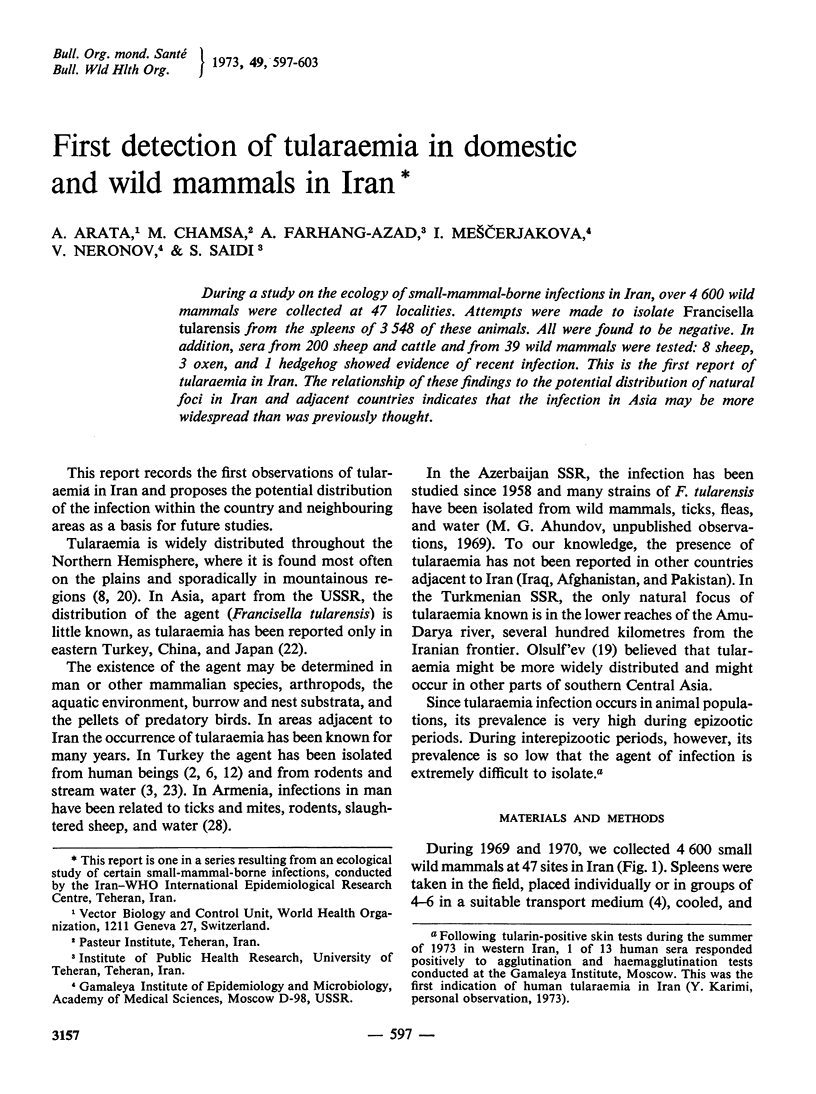
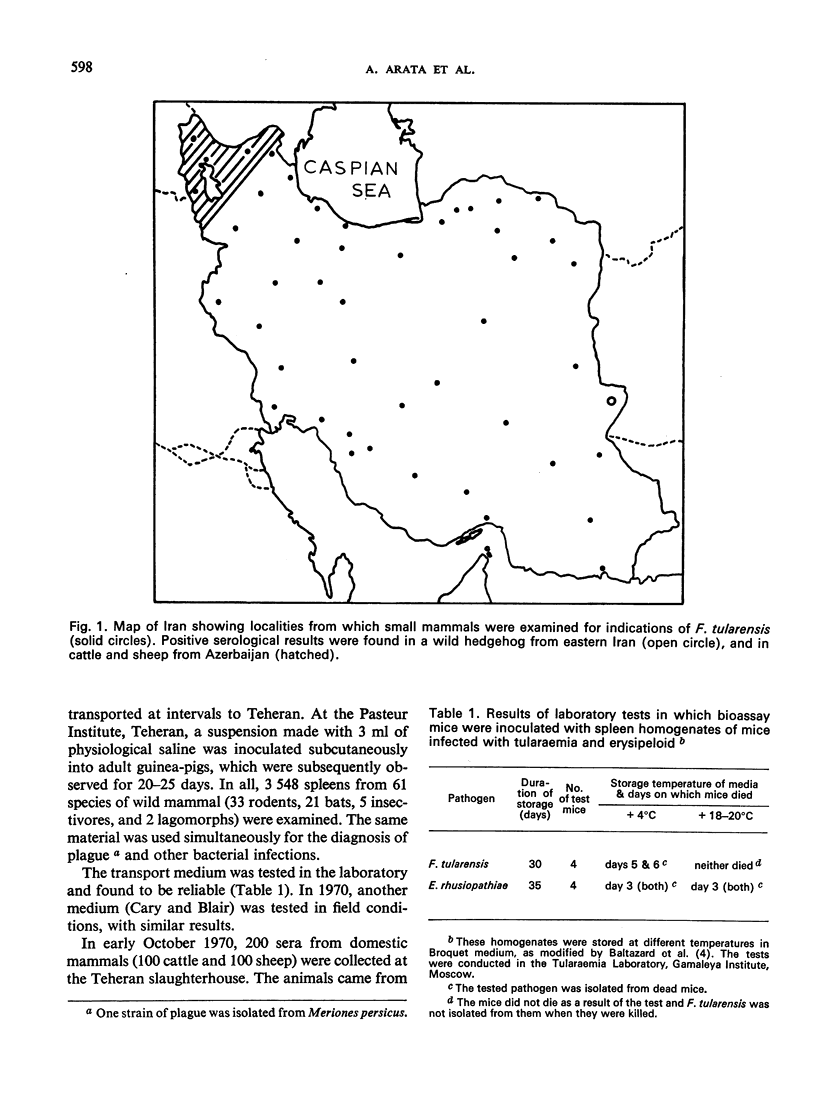
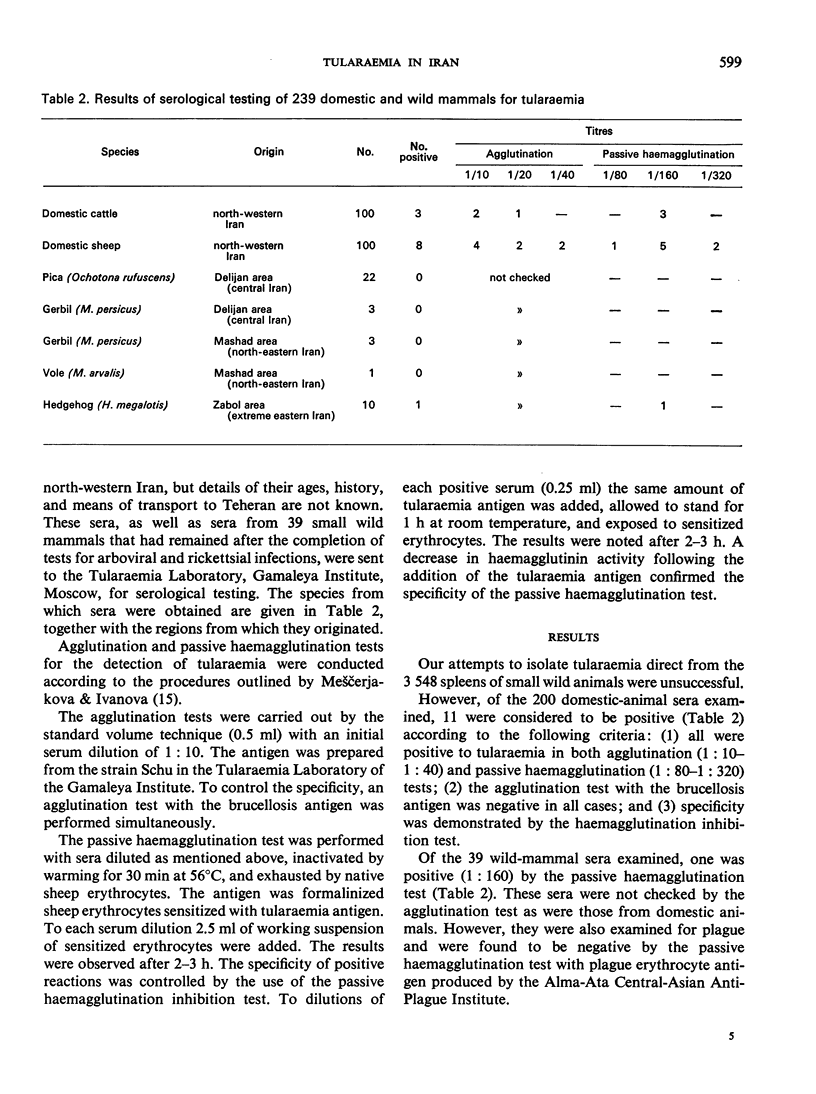
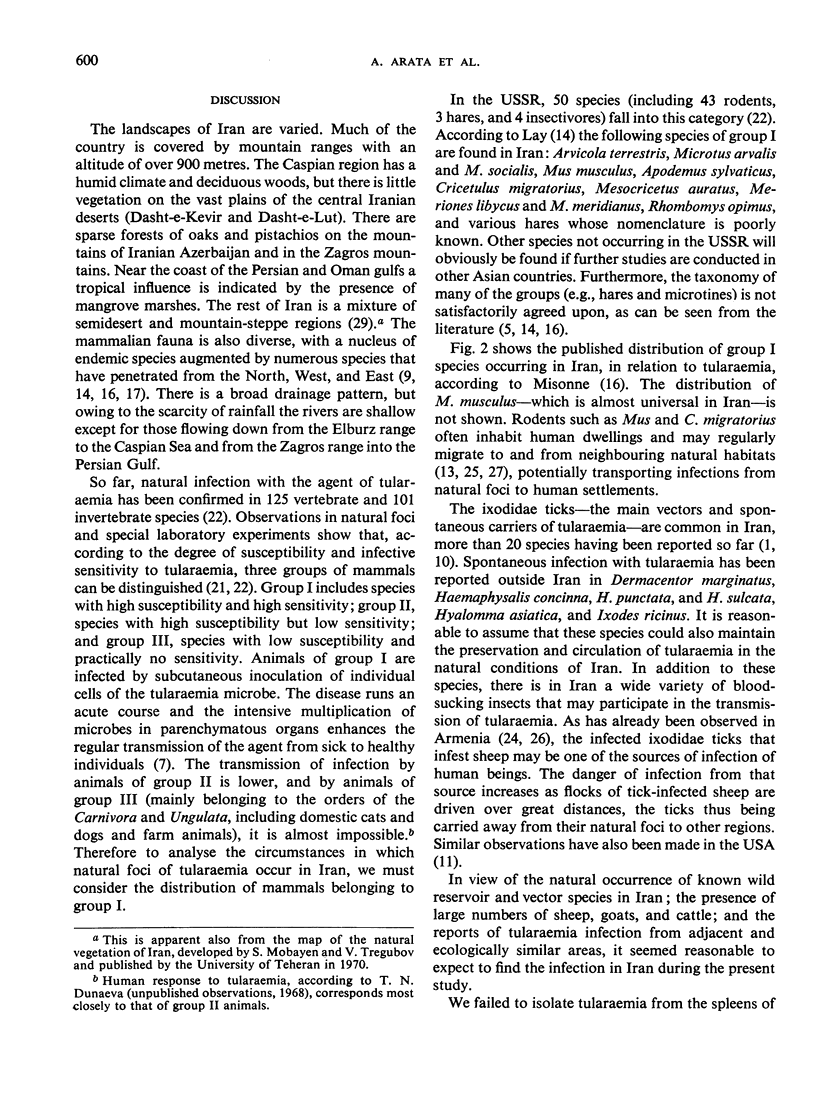
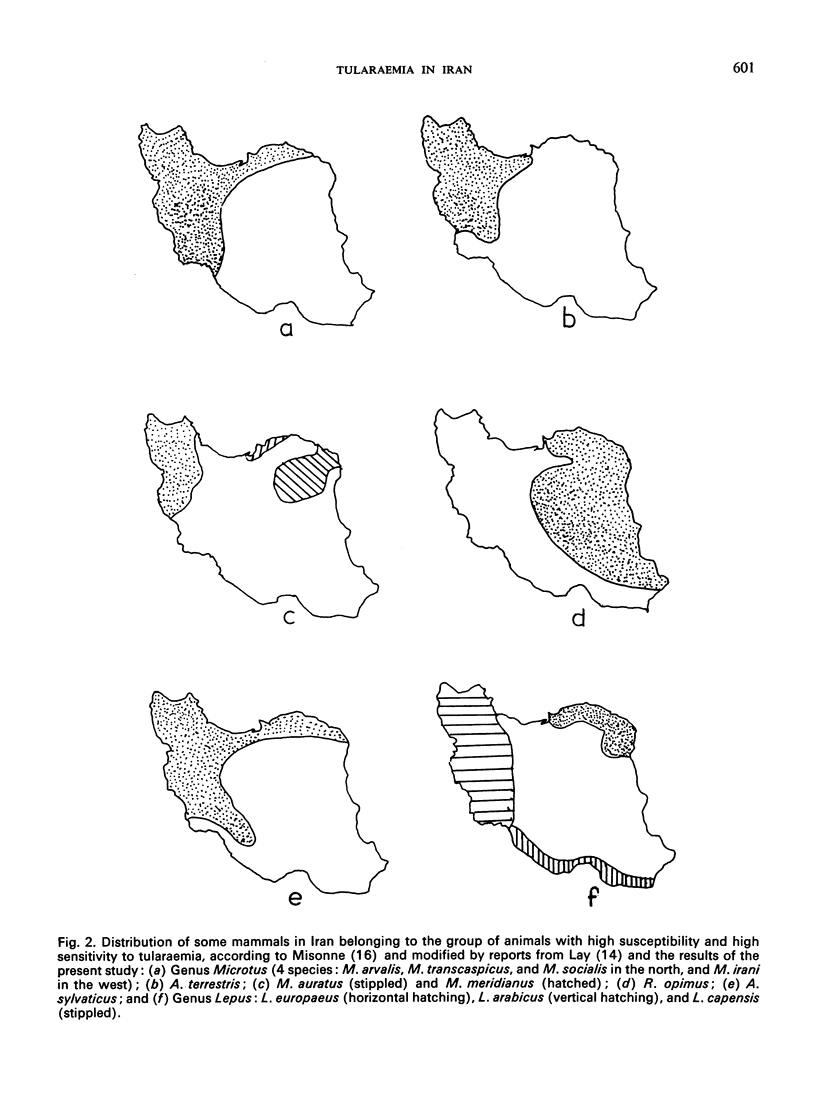

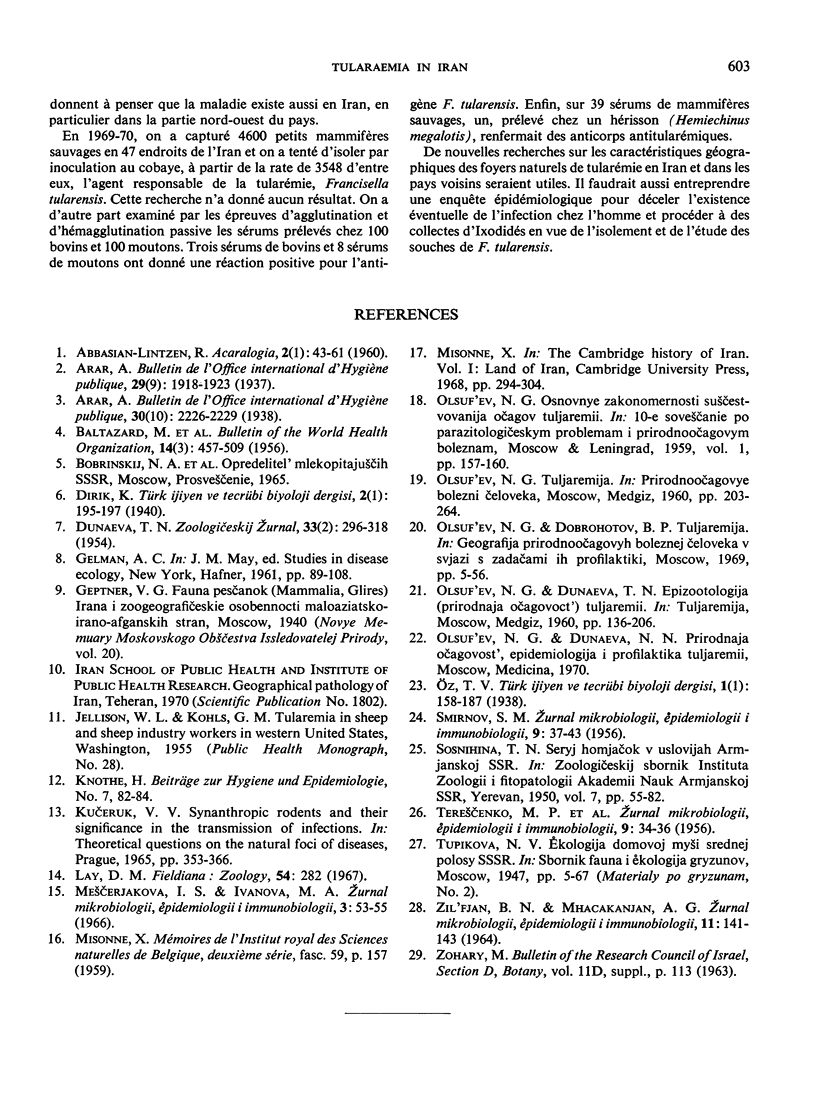
Selected References
These references are in PubMed. This may not be the complete list of references from this article.
- BALTAZARD M., DAVIS D. H., DEVIGNAT R., GIRARD G., GOHAR M. A., KARTMAN L., MEYER K. F., PARKER M. T., POLLITZER R., PRINCE F. M. Recommended laboratory methods for the diagnosis of plague. Bull World Health Organ. 1956;14(3):457–509. [PMC free article] [PubMed] [Google Scholar]


